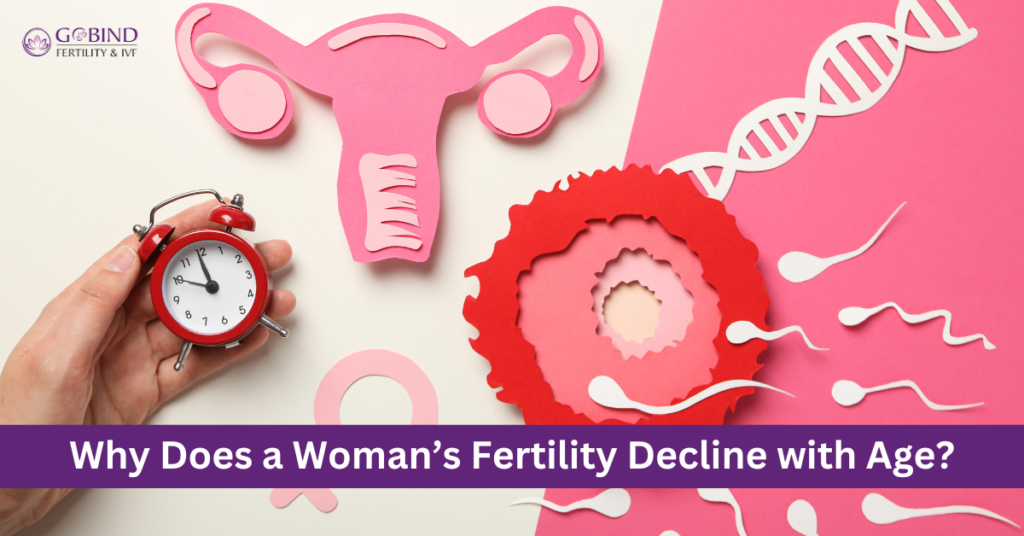Why Does a Woman’s Fertility Decline with Age?

Fertility is one of the most crucial aspects of reproductive health, yet it is often not fully understood until challenges arise. Age is one of the most well-documented factors affecting a woman’s ability to conceive. But why does fertility decline as women grow older? Let’s explore the biological, hormonal, and lifestyle factors contributing to this natural process.
1. The Finite Egg Supply
Unlike men, who continuously produce sperm throughout their lives, women are born with a fixed number of eggs. A baby girl is born with approximately 1 to 2 million eggs in her ovaries. However, by the time she reaches puberty, this number has already declined to around 300,000 to 400,000. Throughout her reproductive years, she will ovulate about 300 to 500 of these eggs. As she ages, both the quantity and quality of her eggs diminish, reducing her chances of conception.
2. Decreased Egg Quality
Not only does the number of eggs decline, but their quality also deteriorates with age. Older eggs are more likely to have chromosomal abnormalities, which can lead to difficulties in conception, an increased risk of miscarriage, or genetic conditions such as Down syndrome. This is why women in their late 30s and 40s may experience more challenges when trying to conceive and face higher risks of pregnancy complications.
3. Hormonal Changes
As women age, their hormone levels fluctuate. A key hormone in reproduction is follicle-stimulating hormone (FSH), which helps regulate the growth and development of eggs in the ovaries. With age, FSH levels tend to rise as the body struggles to recruit healthy eggs for ovulation. Additionally, levels of estrogen and progesterone, which are essential for maintaining a healthy menstrual cycle and pregnancy, also decline, making conception more difficult.
4. Decreased Ovarian Reserve
Ovarian reserve refers to the number and quality of eggs remaining in a woman’s ovaries. This reserve naturally declines with age, with a significant drop occurring after the age of 35. By the time a woman reaches menopause (typically around age 50), her ovarian reserve is nearly depleted, and natural conception is no longer possible.
5. Increased Risk of Reproductive Disorders
As women age, they become more susceptible to reproductive health conditions such as endometriosis, fibroids, and polycystic ovary syndrome (PCOS), all of which can negatively impact fertility. Additionally, conditions like diabetes, hypertension, and thyroid disorders, which become more prevalent with age, can also interfere with a woman’s ability to conceive and maintain a healthy pregnancy.
6. Lifestyle and Environmental Factors
Lifestyle choices and environmental exposures over time can also play a role in declining fertility. Factors such as smoking, excessive alcohol consumption, obesity, poor diet, and high levels of stress can further reduce fertility potential. While some lifestyle changes can improve reproductive health, they cannot fully counteract the natural decline in fertility due to ageing.
Can Anything Be Done to Preserve Fertility?
While ageing is inevitable, there are steps women can take to preserve their fertility:
- Egg Freezing: Women who wish to delay childbearing may consider freezing their eggs while they are still of high quality.
- Healthy Lifestyle: Maintaining a balanced diet, regular exercise, and avoiding smoking and excessive alcohol consumption can support reproductive health.
- Early Family Planning: Understanding fertility trends and considering earlier conception if possible can improve pregnancy success rates.
- Medical Consultation: Women who are concerned about their fertility should seek advice from a fertility specialist Dr Manju Khurana to explore their options.
Conclusion
Fertility declines with age is a natural biological process influenced by diminishing egg quantity and quality, hormonal fluctuations, and other health factors. While medical advancements offer some solutions, awareness and proactive planning are key for women who wish to conceive later in life. Understanding these changes can empower women to make informed decisions about their reproductive health and future family planning.
